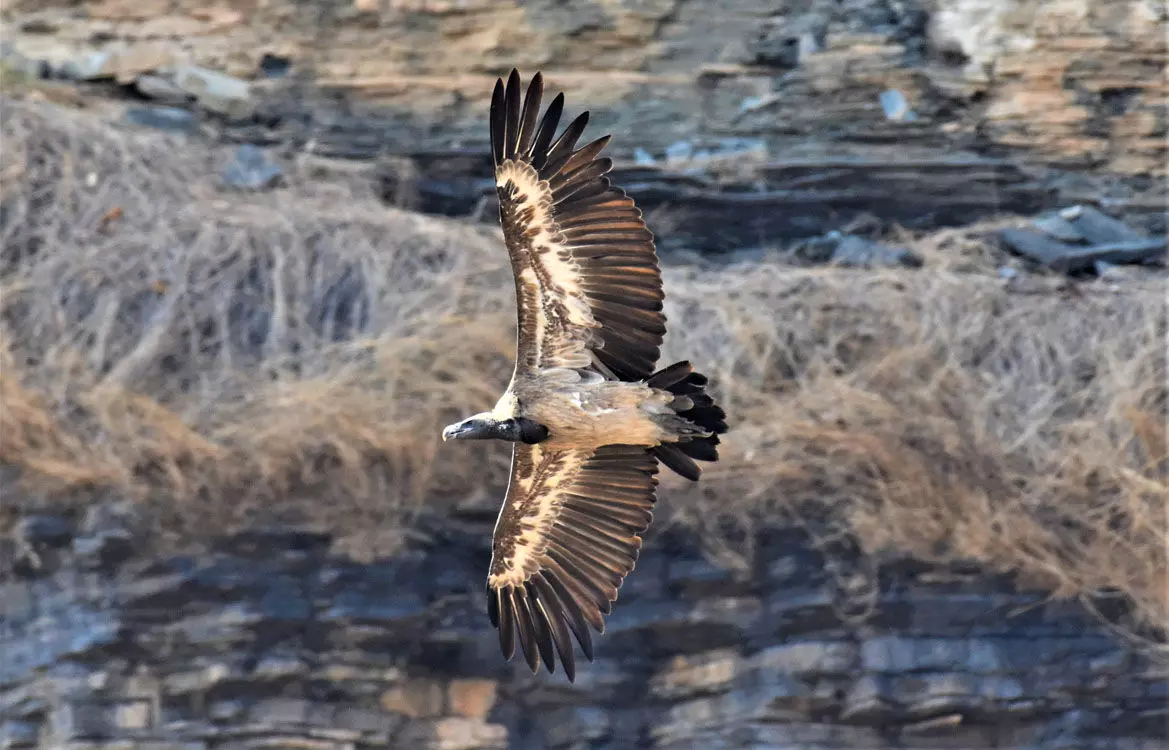'Only one pair sighted': Funds shortage hits vulture research, conservation in Telangana
The Vulture Conservation Programme (VCP) was launched in 2014 with a paltry fund of Rs. 5 lakh per year
By S. Harpal Singh
Adilabad: Funds shortage has hit the vulture research and conservation in Telangana.
For want of just a few lakh rupees, Telangana has lost track of its growing population of the magnificent scavenger birds which fall under the critically endangered species in terms of IUCN status.
The Vulture Conservation Programme (VCP) was launched in 2014 with a paltry fund of Rs. 5 lakh per year for saving the tiny population of the long-billed vulture or Indian vulture (Gyps indicus) at the pristine habitat, the Palarapu cliff in Penchikalpet forest range in Kagaznagar Division of Kumram Bheem Asifabad district. The project has been suspended for all practical purposes.
"Vulture conservation will be properly taken care of once Kagaznagar and Asifabad Forest Divisions are notified as a Conservation Zone. Our proposal to make these forests safer for wildlife has been okayed by the Telangana State Wildlife Board and it awaits the nod from Central authorities," pointed out KB Asifabad District Forest Officer Neeraj Tibrewal, assuring conservationists that the issue has not been lost sight of.
The discontinuation of committed conservation efforts, about a year and a half back, has given rise to a gap in the study of the behavior of this vulture species. The number of the scavenger birds in their nests on the ledges of the Palarapu cliff kept on decreasing starting in 2020 so much so that only one pair was sighted roosting on the mighty habitat located on a picturesque spot on the confluence of Peddavagu stream and Pranahita river near Nandigam village.
A team of conservationists, had it continued its work all through, could have found the answer to this worrisome question. At present only one pair of large birds can be seen on the mighty habitat.
The habitat itself seems to be under threat, especially from the weather. Some of the ledges situated about 70 to 80 meters from the base of the cliff are falling off slowly.
Under the watchful presence of the dedicated staff of the VCP, the population of the scavenger birds had grown from the 7 seen first in 2013 to 34 in a matter of five years. The funding for the program, which was sourced through the Compensatory Afforestation Fund Management and Planning Authority (CAMPA) was discontinued about a year and a half ago.
The targeted conservation efforts during the years that mattered included creating awareness among the locals on the importance of saving the vultures. The team of conservationists headed by the then Bejjur Forest Range officer M. Ram Mohan has ensured that the birds did not feed upon poisoned carcasses of animals.
The team organized a vulture restaurant at the top of the cliff for the vultures to feed. Carcasses were supplied at regular intervals but somehow the vultures did not feed on them.
There are only speculations as to what happened to the Palarapu vulture population. The metapopulation birds could have gone to the Kamalapur habitat which lies about 100 km away from Palarapu in the Gadchiroli district of Maharashtra.
Inquiries with the Maharashtra Forest Department regarding the presence and strength of the Long-billed vulture population, nevertheless, failed to elicit a convincing reply. It is assumed that some vultures may have died in Gadchiroli for reasons unknown.
The Gadchiroli population of vultures is estimated to be 400 strong as it includes four species of scavengers. Besides the Indian vulture, the Kamalapur, Venkatapur, and Lakkadekalu habitats also include the Egyptian, White-rumped, and slender-billed vultures.